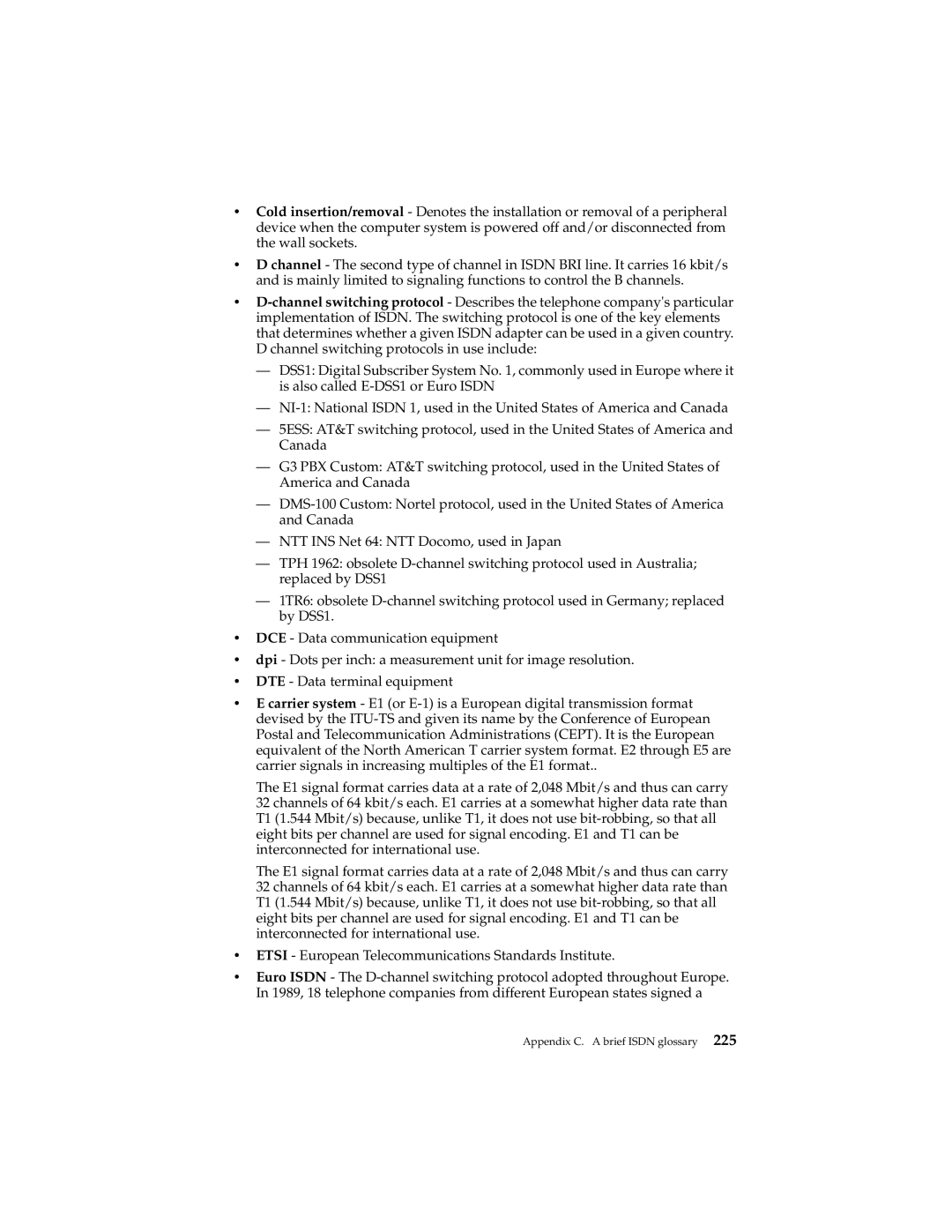•Cold insertion/removal - Denotes the installation or removal of a peripheral device when the computer system is powered off and/or disconnected from the wall sockets.
•D channel - The second type of channel in ISDN BRI line. It carries 16 kbit/s and is mainly limited to signaling functions to control the B channels.
•
—DSS1: Digital Subscriber System No. 1, commonly used in Europe where it is also called
—
—5ESS: AT&T switching protocol, used in the United States of America and Canada
—G3 PBX Custom: AT&T switching protocol, used in the United States of America and Canada
—
—NTT INS Net 64: NTT Docomo, used in Japan
—TPH 1962: obsolete
—1TR6: obsolete
•DCE - Data communication equipment
•dpi - Dots per inch: a measurement unit for image resolution.
•DTE - Data terminal equipment
•E carrier system - E1 (or
The E1 signal format carries data at a rate of 2,048 Mbit/s and thus can carry 32 channels of 64 kbit/s each. E1 carries at a somewhat higher data rate than T1 (1.544 Mbit/s) because, unlike T1, it does not use
The E1 signal format carries data at a rate of 2,048 Mbit/s and thus can carry 32 channels of 64 kbit/s each. E1 carries at a somewhat higher data rate than T1 (1.544 Mbit/s) because, unlike T1, it does not use
•ETSI - European Telecommunications Standards Institute.
•Euro ISDN - The
